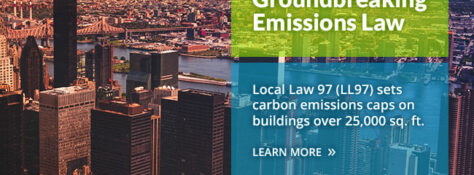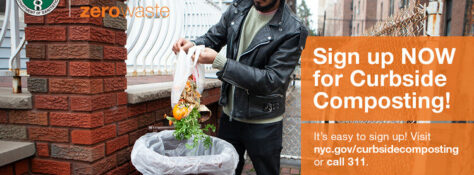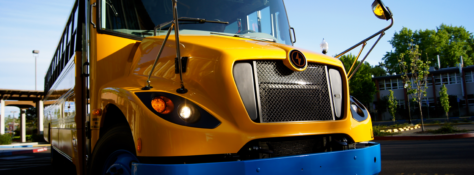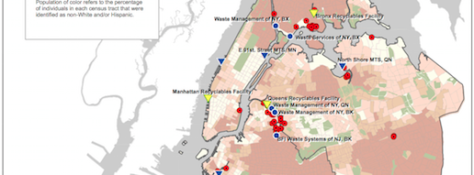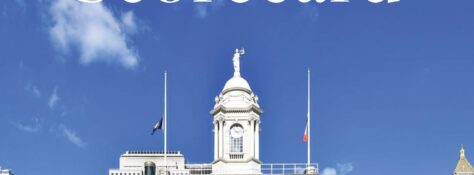Yesterday, the NY League of Conservation Voters, Riders Alliance, and Transportation Alternatives came together and held a rally at the steps of City Hall for the NYC Streets Plan. Together we advocated for a fully funded NYC Streets Plan in Mayor Adam’s Executive Budget and to increase the budget for funding to $3.1 billion.
If we are to improve the safety, accessibility, and quality of our transportation network and our City’s streets, we must fund and implement the NYC Streets Plan. This plan will help make existing transit infrastructure more efficient and reliable as well as make street infrastructure safer for pedestrians and cyclists.
Learn MoreThe New York City Council recently held preliminary budget hearings for the Committees on Housing and Buildings, and Transportation and Infrastructure. For both of these hearings, NYLCV New York City Program Associate Carlos Castell Croke submitted testimony in support of expanding the city’s budgets to make existing plans to reduce emissions and improve transportation infrastructure more feasible. New York City buildings are easily the heaviest contributor to carbon emissions in the city, accounting for up to 70% of carbon emissions and 80% of total water usage. Decreasing building emissions is therefore vital in reducing the city’s overall carbon footprint. One key step the city is taking to address building emissions concerns is the passage of Local Law 97, which aims to reduce greenhouse gas emissions 40% by 2030, and 80% by 2050, fining those who fail to comply with emission reduction efforts.
Learn MoreAfter another protracted budget session in the New York State Legislature, we are happy to say that this year’s budget has delivered for the environment. Some of the biggest wins to come out of the 2022-2023 budget negotiations are the $4.2 Billion in the Clean Water, Clean Air, and Green Jobs Environmental Bond Act of 2022, often referred to in Albany as the “Environmental Bond Act,” along with major wins in Wetland Protection, Electrification of School Bus Fleets and an extension in the Brownfield Cleanup program. While we were successful in including these major initiatives, there is still a lot of work to be done in the remaining weeks of the legislative calendar.
Learn MoreAs oil and gas prices soar to record highs for everyday consumers to bear the brunt of the burden while big oil companies profit, it is becoming more evident with each growing day that energy security and independence should be of utmost concern. Amidst the growing energy demand and the increasing greenhouse gas emissions, a recent Pew Research Center survey finds that around 7 out of 10 U.S adults believe that the country should prioritize the development of alternative energy sources, such as solar and hydropower, over expanding the production of fossil fuels such as coal, oil, and natural gas.
Learn MoreNearly one third of the waste New Yorkers produce is organic material. When this material ends up in landfills, it releases methane, a greenhouse gas 30 times more potent than carbon dioxide. Through an organized composting process, this food waste would be collected, broken down, and recycled into fertilizer for plants and farms. According to an estimate from the New York State Department of Environmental Conservation, eliminating food waste across the state would remove 120,000 metric tons of carbon dioxide equivalents from the atmosphere per year. That’s the equivalent of taking over 25,000 cars off the road.
Learn MoreWe’re all familiar with the yellow school buses of our childhood: the rattling sounds of metal, the squeals of our peers, leather seats that had seen better days. Their presence was an integral part to so many childhoods – so what’s being changed? Transportation is a leading contributor to greenhouse gas emissions in New York, accounting for a third of total overall emissions. Not only are these emissions harming the planet, but research has shown that they are also harming New York’s children, leading to higher levels of asthma.
Learn MoreBlack, Indigenous, and People of Color (BIPOC) communities are continuously burdened by the cumulative impacts of multiple hazardous environmental facilities being placed in their communities. Historically, minority communities and economically distressed communities have borne a disproportionate and inequitable share of environmental facilities such as landfills, waste transfer stations, and fossil fuel power plants. These industrial facilities cause significant health impacts such as asthma, lung and heart disease, increased birth defects, and learning impairments. The negative health impacts of poor air quality, polluted waters, toxic gasses, and more are exacerbated in these communities as a result of the cumulative burden of multiple sites. This bill addresses a fundamental issue of environmental racism, that communities of color should not have all the environmental hazardous facilities sited in their neighborhoods.
Learn MoreOf the thirteen bills, used to evaluate each Council Member in 2021, eight were passed. The Plastic Straw Ban, sponsored by Councilmember Rosenthal that passed in May 2021, reduces single-use plastics in our waste stream and helps save small businesses millions. Councilmember Constantinides sponsored two resiliency-focused bills to study wastewater treatment and renewable energy opportunities on Rikers Island—both of which passed in February of 2021. Councilmember Dromm’s diesel school bus phase out, a long term NYLCV priority that requires all city school buses be fully electric by 2035, finally passed in October 2021.
Learn More

